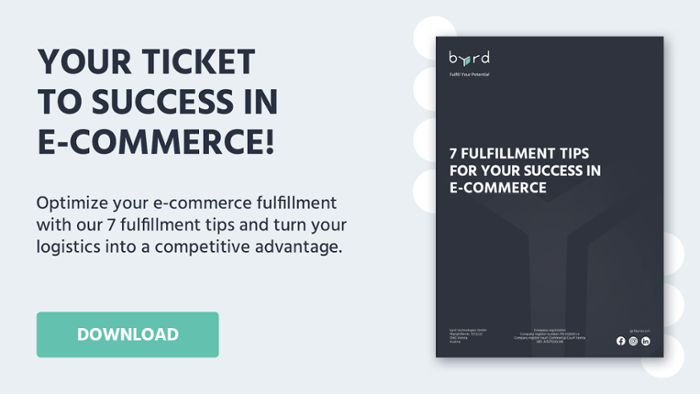Reverse logistics in e-commerce
Table of Content
Returns have been gaining importance in online retailing for years. Successful e-commerce companies have recognized this and are placing increasing value on transparent returns policies, optimized reverse logistics processes, and smart strategies to reduce returns. In the best case, you as an online retailer can even use returns to increase customer loyalty and as a sales argument.
Reverse logistics is the process of returning products from customers back to the producer or seller. Especially in online retailing, the entire returns management process is taking on an increasingly important role. This includes the return of products to the supply chain and the transport back to the relevant warehouse, fulfillment center, or production facility. A quality check is then carried out on-site and the products are then either restored, processed, and made functional again. If the faulty product is beyond salvation then it is disposed of properly.
Experts often talk about the 5 Rs when it comes to returns management:
- Returns
- Recalls
- Repairs
- Repackaging
- Recycling
The returns process is a relatively time-consuming and labor-intensive process, requiring many “touches”. This also results in high return transport costs, which further hinder your profit margins. In addition, it creates more work for customer support and the supply chain. For example, according to a report by Oporto, a product sold for $50 incurs 59%, or nearly $30, in return shipping costs.
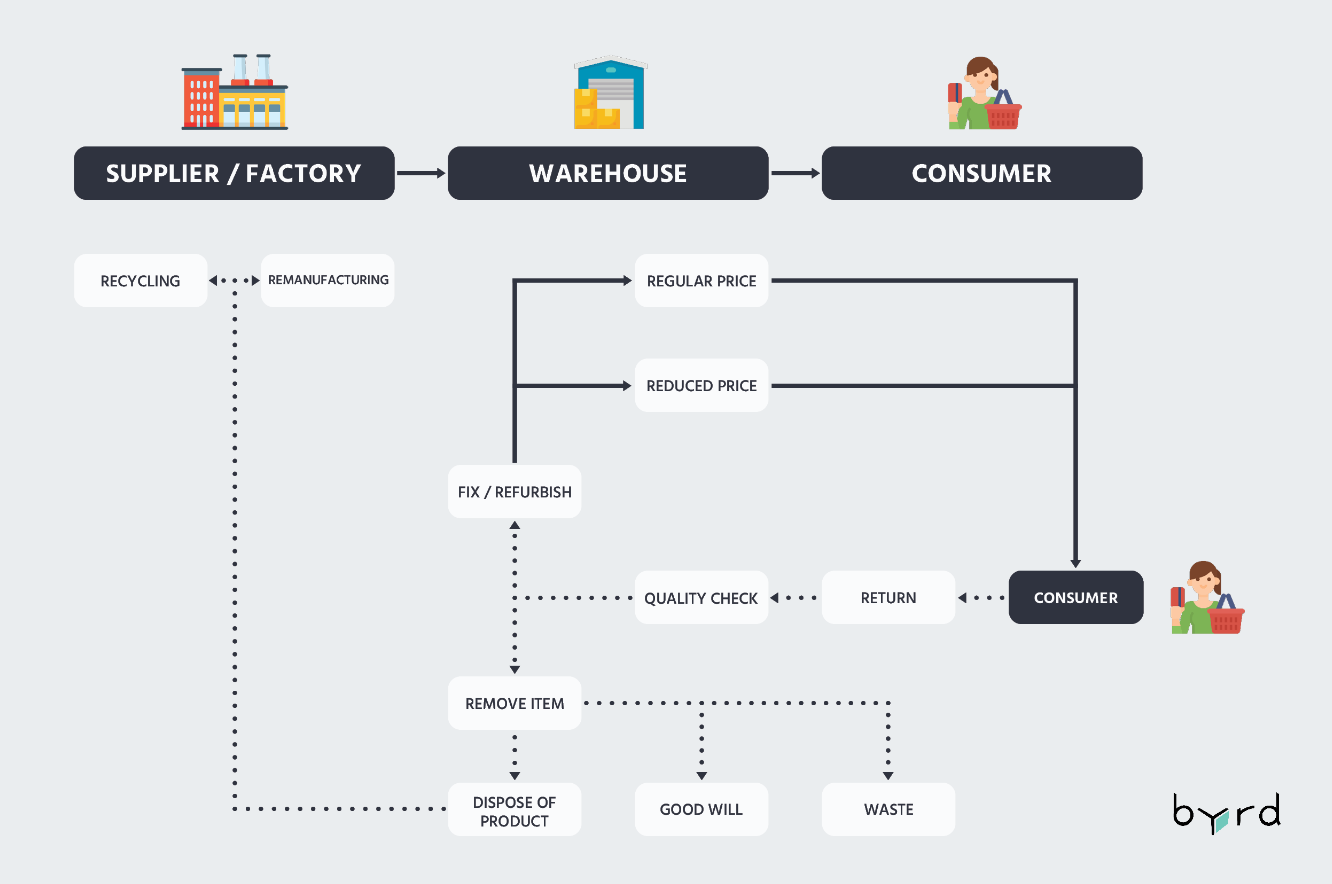
It is no longer a secret that returns in online retailing can make the difference between success and failure for e-commerce companies. To emphasize the importance of returns and reverse logistics in online retailing, and how customer behavior has changed in regards to returns, we curated some facts and figures about its decisive role in your business’ success.
Even before the pandemic, the likelihood of a return after an online purchase was already 3 times higher than for offline purchases. Despite this, 66% of consumers have since preferred returns in brick-and-mortar retail regardless of purchase method.
However, that has changed dramatically. E-commerce has grown at an unimaginable speed. As a result, both fulfillment toward customers and reverse logistics have become critical factors in customer satisfaction. For this reason, 40% of online retailers changed their return policies during the first phase of the COVID pandemic. Another 27% considered adjusting their returns strategy already back in May 2020.
In fact, returns created costs of $642 billion in 2020. Incidentally, that is equivalent to the entire GDP of Austria and Portugal combined.
Last but not least, the largest proportion of people in Europe, who have returned goods ordered online within 12 months after the buy, come from the following countries:
- Germany (56%)
- Spain (49%)
- Sweden (46%)
- France (46%)
- UK (45%).
In addition to the heavy burden on online retailers, returns also contribute to harming the environment. Returns added 2.27 million tons of waste to landfills and 15 million metric tons of CO2 emissions, according to figures from Optoro (2020).
Given the above-mentioned statistics, it is safe to say that reverse logistics and returns became an important part of doing business online. Howbeit, as online shoppers’ behavior adapts to utilize returns as part of their shopping journey, costs for reverse logistics quickly skyrocket. To keep costs under control, e-commerce shops can explore ways to reduce the number of preventable returns.
How can I reduce returns?
To do this, online retailers should first and foremost look at the reasons for returns. According to Statista, the most common reasons for returns in online retail are:
- Defective or damaged products (30%)
- Products that are different than described (27%)
- Products that are of poor quality (27%)
- Orders of too many products (20%)
- Delivery problems (18%)
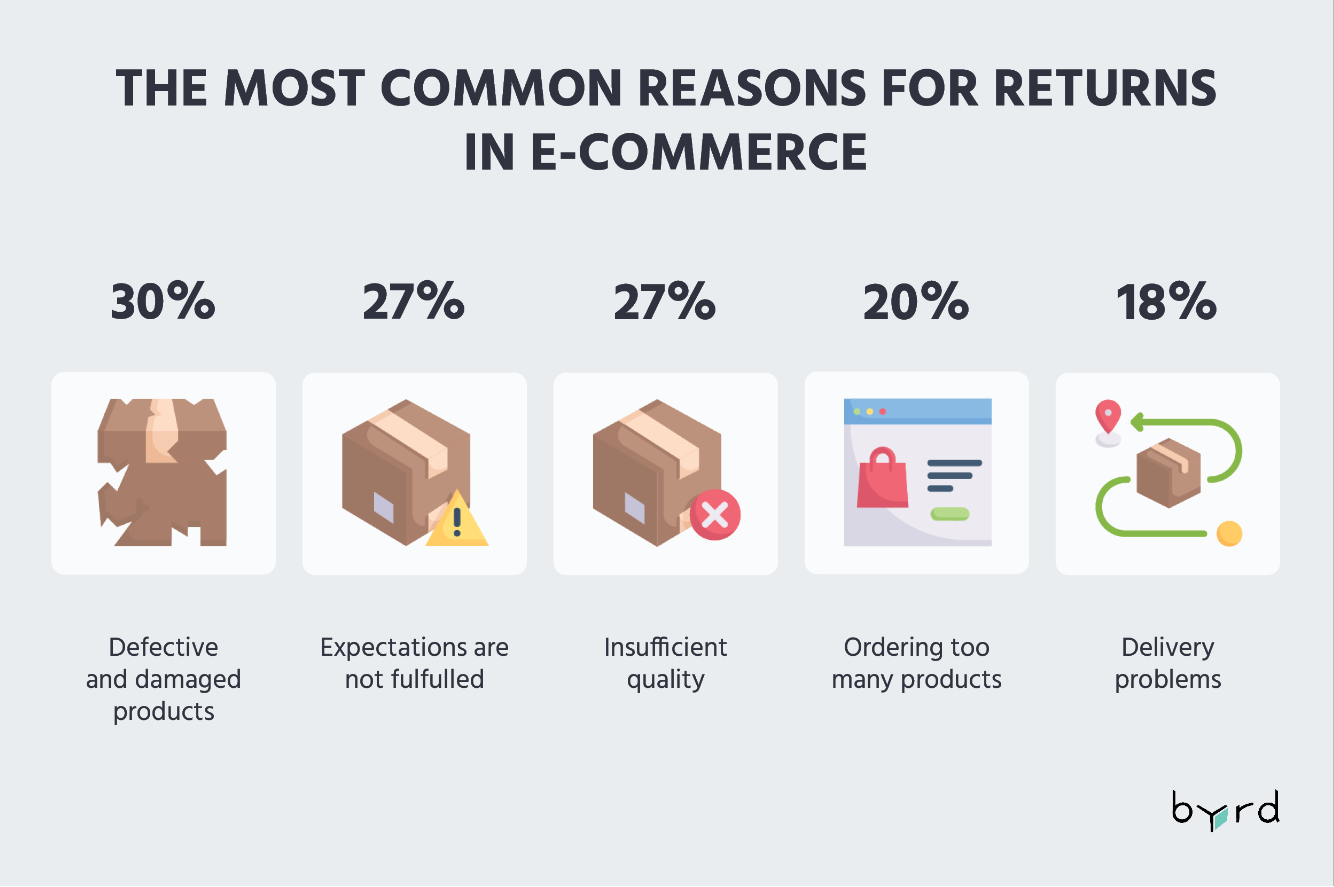
Returns result in costs for online businesses for the following reasons:
- Forgone profit
- Shipping costs
- Time spent on quality control, storage, etc.
- Expenditure for customer support
- Repair, recycling, or disposal of the product
- Loss of value on resale
For this reason, preventing avoidable returns is the top priority for e-commerce companies. As a first step, you as an online retailer should try to find out what the most frequent reason for returns is in your case. You can find this out, for example, through surveys, through reviews on the internet, or through direct feedback. Therefore, we suggest you actively ask for reasons why your products are returned. As in any business, the key to success is to know and understand your customers.
The key to reducing returns is to get to the root of the problem
Returns due to defective or damaged goods
In this case, it is crucial to find out why your goods were damaged. Generally, there are three main reasons.
- Unsuitable packaging
- Errors in the delivery and/or transportation of the products
- Damage in the warehouse
When it comes to damaged or defective goods, completely avoiding such cases in the supply chain is almost impossible. However, when this occurs frequently, then appropriate measures must be taken and proper quality control processes should be implemented.
Look for suitable packaging and get advice from experts. Material, size and, if necessary, filling materials are crucial and must be carefully selected depending on the product. Also, don’t underestimate the potential of packaging as a marketing tool.
However, if errors occur during transport or in the warehouse, you should confront your partners and demand compensation. If there is no improvement, you should look for other logistics solutions, because even if you are compensated for the defective products, every faulty delivery has a negative impact on customer satisfaction. This will show up in repurchase rates and negative word-of-mouth in the short and long term. Therefore, opt for experienced shipping and logistics companies. Fulfillment service providers like byrd can save you a lot of work and even more hassle.
Returns are decisive between success and failure in e-commerce – always work with experts
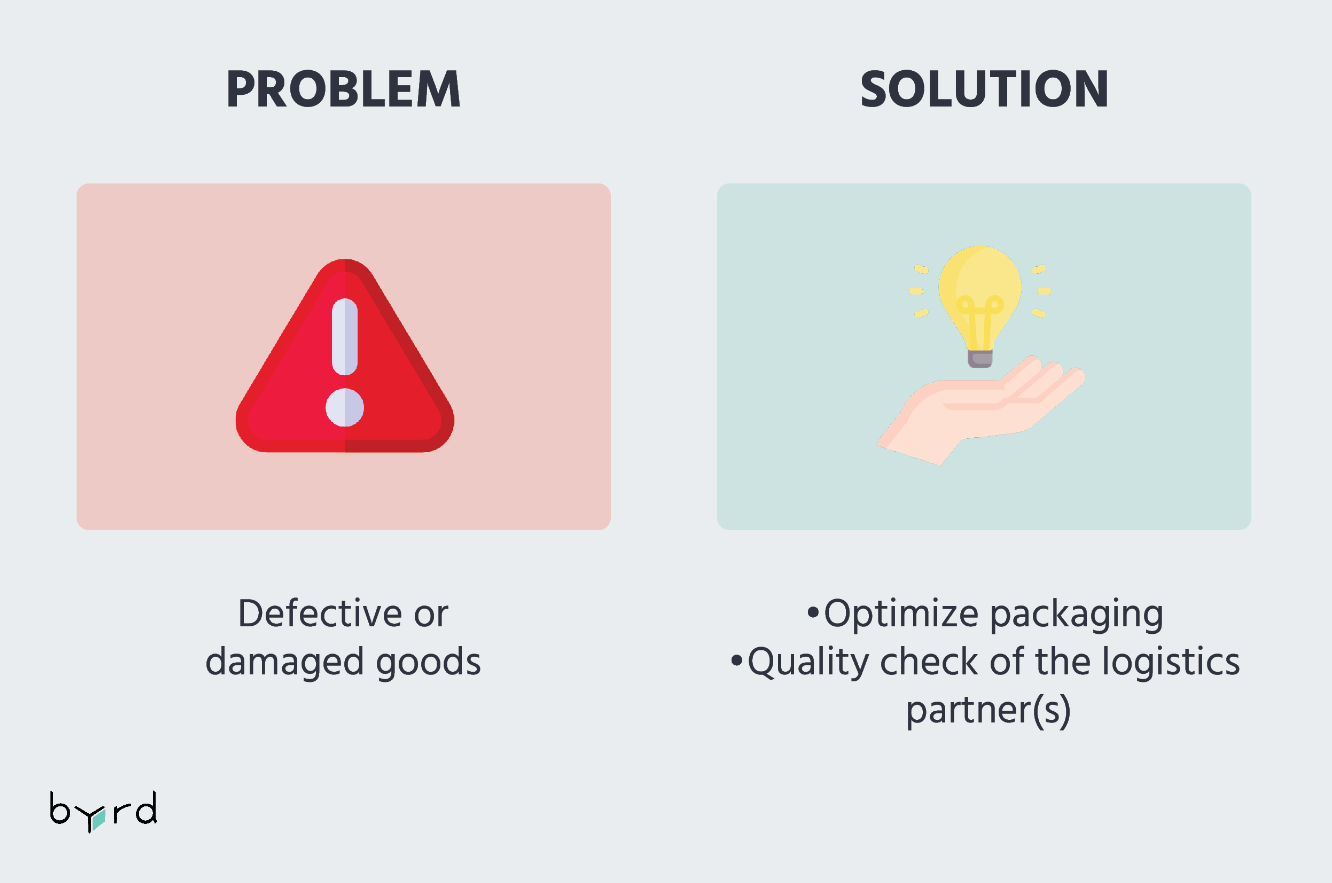
Returns due to false expectations
External circumstances that are difficult to influence often lead to returns. Howbeit, inaccurate or misleading product information is not one of them. Through precise analysis, you can find out where false expectations were created. Don’t worry, everyone who has been in e-commerce for a while has experienced it – customers have a different perspective on your products and often read descriptions inaccurately or not at all. So, you should find out where this is the case and turn the right screws. Often, headlines or color-highlighted product information are enough. In many cases, product images are an enormous help. Especially when it comes to complex and specialized products, a precise product description is crucial.

Returns due to poor quality
If there is an increase in returns due to poor quality, it is important to act as quickly as possible. In such cases, you have to assume that you have lost the customer for good in most cases. So work on the quality of your products and adapt your marketing promises to reality.
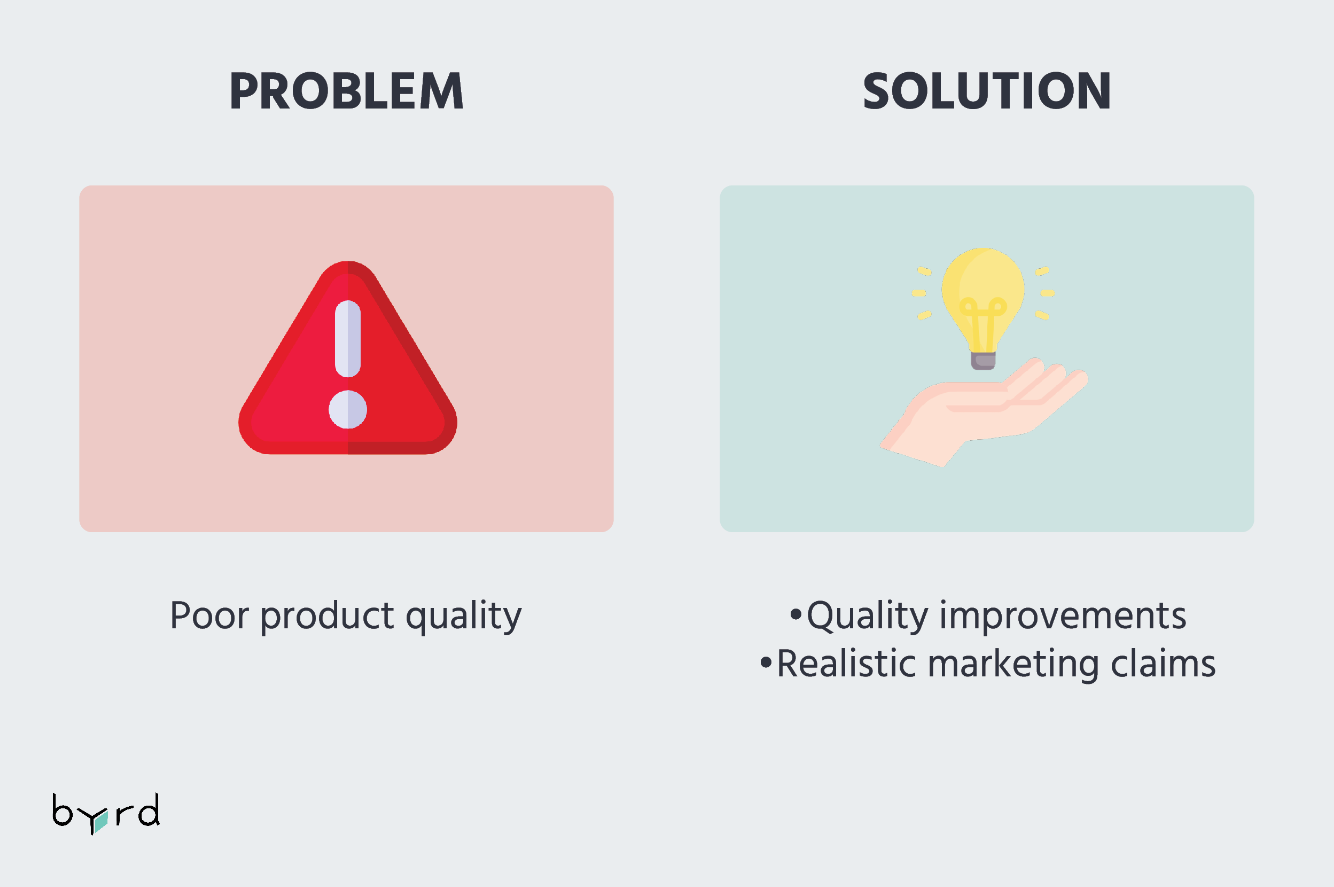
Returns caused by the order of too many products
Returns resulting from an order that is too large are particularly annoying for online retailers. This is particularly the case for online purchases of clothing/fashion, electrical appliances, and accessories. At the same time, according to the Global Web Index 2019, these product segments are generally the most frequently returned. E-commerce companies in this sector sometimes already anticipate up to 40% of sales as returns.
So, the decision to be made here is whether to pass on the resulting costs to all customers by increasing the products’ price or charging the return shipping costs to the respective individuals. Both cases harm the conversion rate. The key here is to find the optimal solution between price increases and shipping costs. As a rule, customers react comparatively less sensitively to price increases, but this often discourages “uncomplicated” and thus profitable customers, while indirectly encouraging the behavior of planned returns.
Make data-driven decisions to satisfy the right customers and let go of unprofitable ones
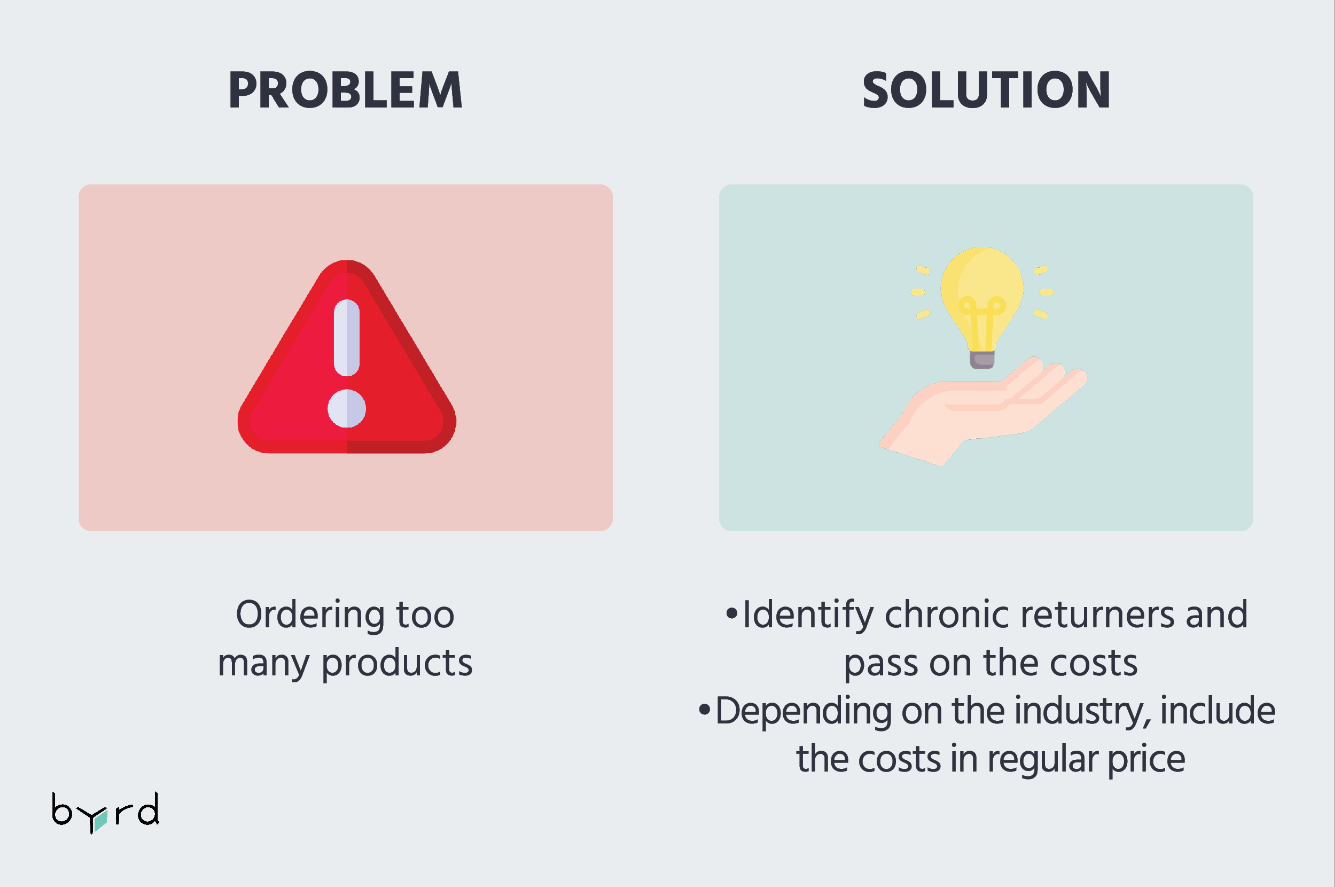
|
Practical returns management tip: |
Returns due to delivery problems
Another important cause for returns is delivery problems. These can be related to incorrect delivery addresses (make sure that your customers check all the details again and that there are no ambiguities) or poor service from the relevant parcel delivery services. Therefore, pay attention to what is the optimal parcel service is for your shipments. It is crucial to give your customers the possibility to track deliveries and redirect them to a parcel station, if necessary. Options for specific time slots or the possibility to leave the package with a neighbor, for example, increase the delivery success rate enormously. Customers also expect fast delivery, usually within 2 days. It is therefore important to make the entire fulfillment process as fast and effective as possible. Especially the pandemic and unexpected events like the blockade of the Suez Canal have shown us how vulnerable the whole supply chain is to external factors. Therefore, think about storing your products decentrally in different logistics centers so that you are always able to deliver to your customers in a timely manner.
Put your focus on reliable logistics in both directions of the supply chain (forward and reverse logistics)
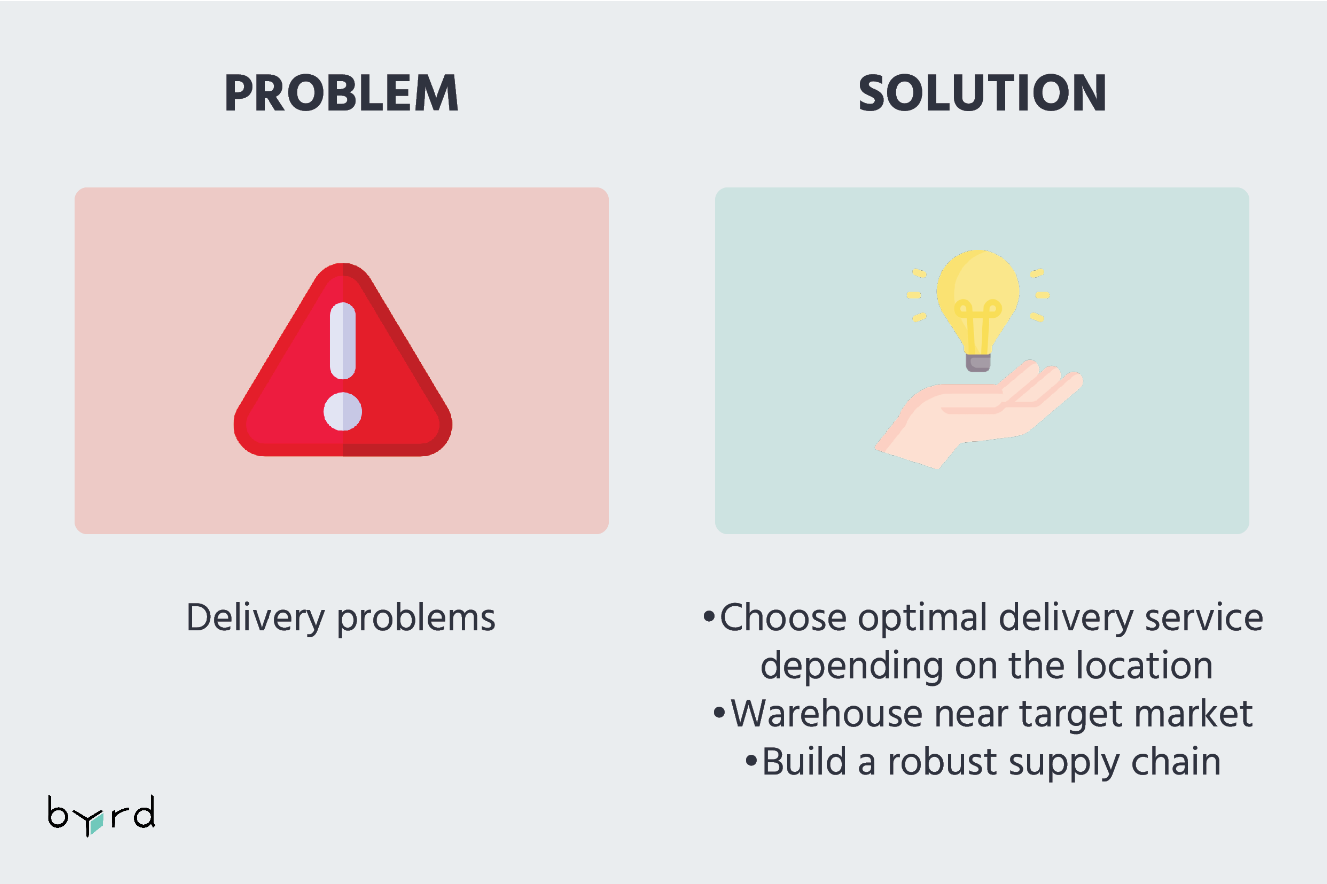
In summary, it can be said that the problem must be treated at its root. As is often the case, online retailers who know their customers and understand their problems achieve the best results. In this case, existing problems can often be solved without much effort.
Besides understanding the needs of your online shoppers, it is important to find creative and customized solutions.
Retailers need to get creative to reduce resources needed since returns can destroy a business
– Jordan Knapp, Head of New Markets, Shopify
|
Expert Tip: |
Returns are not only an enormously important satisfaction factor in e-commerce, in fact, but they are also part of the law in the EU due to the following regulations.
Right of withdrawal
The right of withdrawal is incorporated in EU law and states that online customers have the right to return goods within 14 days and without giving any reason. However, this regulation is suspended for personalized items, quickly perishable products, and sealed hygiene products that were opened.
Legal guarantee
The customer has a warranty obligation for 2 years if the goods were defective at the time of delivery. For the first 6 months, there is a reversal of the burden of proof, which gives the customer more rights.
Commercial guarantee (warranty)
Legally, the guarantee plays a relatively minor role. It exists only based on voluntariness on the part of online retailers. An example of this would be a retailer stating that there is a 15-year guarantee for their mattresses. Note, however, that this gets legally binding if it is used in marketing activities.
Callback
A callback takes place when products that have already been sold pose a safety risk. In this case, online shoppers are entitled to a replacement of the value of the goods, even after the warranty period has expired.
Despite all precautions, it is simply not possible to prevent a certain percentage of your sales from being returned. The key here is to keep the work it creates as low as possible and develop an optimized and efficient returns process. A simple returns process reduces costs, prevents a big impact on your profit margins, and delivers customer satisfaction.
As is so often the case in e-commerce, automation is the decisive factor in increasing effectiveness.
Make sure that every aspect that can be automated is automated. This will save you time and money. Incidentally, in most cases, this drastically reduces the error rate as well.
An important factor, especially in terms of customer satisfaction, is the inclusion of return labels. Just under half of customers expect this when making a purchase.
Alternatively, you can (and if possible, you should) also offer a returns portal. In this case, return labels are available digitally. On-demand return labels have three advantages:
- Better unboxing experience for the customer
- Less effort for your company (printing, enclosing, etc.)
- Sustainable solution (paper, ink, etc.)
A digital returns portal also brings other advantages:
Reduce pressure on customer support |
Full transparency for all parties involved |
Digitally capture the reason for your product returns |
Drive customer satisfaction and increase consumer loyalty |
|
Save time and resources by turning the return process into customer self-service. The time can thus be used for more important things |
Customers benefit from a customer-friendly process for registering returns and you get to know which items are being returned, well in advance |
Gain valuable insights into the exact reasons for returning products. Your customers can choose from a fully customizable set of reasons for return |
The self-service return process provides a better experience for your customers. They will also remember this the next time they buy your products online |
If your business model, like many others, cannot prevent returns, working with a 3PL fulfillment partner could be the right solution for you. These companies specialize in optimizing the supply chain fulfillment and logistics for online shops. The same goes for reverse logistics; by bundling together returns from multiple companies, they can negotiate advantageous prices with parcel service providers due to their high volume of shipments. In turn, 3PL fulfillment providers can pass on attractive conditions and cost-optimized logistics processes to online retailers, enabling them a tangible competitive advantage in the market. This not only saves you a lot of time but also reduces the costs of your reverse logistics.
How to use returns to your advantage
So far, we’ve shown you how to reduce e-commerce returns and optimize the return process. In this section, we focus on using returns as a sales argument and customer loyalty initiative.
84% of online shoppers say they would be more likely to return to the same company after a positive experience with returns.
At the same time, 74% also say that retailers should improve their return policies. So the result is that there is a lot of catching up to do here.
Moreover, a study in the prestigious Journal of Marketing demonstrated that when customers received free shipping on returned items, their purchases over the next two years increased by between 58% and 357%.
As a business practice, returns are expensive; as marketing activities, they are cheap
– L.L Bean
Reverse logistics is one of the overlooked areas to leverage as a competitive advantage and differentiator against the competition. A study by Walker shows that 2021 will be the first year that customer experience is more important as a selling point than price or the product itself. According to the study, 2 out of 3 companies compete on this level.
The customer experience has replaced price and product as the decisive selling point
Apart from that, sales can be increased and customers can be retained. In fact, non-transparent or unsatisfactory return policies are two of the key reasons for purchase abandonment and poor conversion rates. That’s because customers have come to expect a return process that is as simple as the purchase itself. Nearly 9 out of 10 shoppers look at return policies during the purchase lifecycle. So, comparable to free or low-cost shipping and CO2-neutral delivery, this factor now plays an incredibly important role in the purchase decision process.
If a purchase is made and then returned, a transparent returns process is the best way to turn a dissatisfied online shopper into a loyal customer. You should set up a process where customers can track the return and always know where the package is. Once the product arrives, your payment should be triggered. This leads to customer satisfaction and reduces the burden on customer support.
All in all, returns are still one of the biggest challenges in the e-commerce business. At the same time, they are also a huge opportunity for online retailers to differentiate themselves from competitors, retain customers, and even increase sales. By now, you already know what reverse logistics is and how to optimize the returns process through automation or by partnering with a fulfillment service provider. In addition, we also skimmed through the most common reasons for returns in online retail and how to reduce returns by eliminating them in advance.
And lastly, we’ve built an effective case for why you should have a solid returns strategy and why this can be an important differentiating factor for the success of your online business, while also serving you as an effective tool to gain loyal customers and increase trust even before the purchase. Therefore, it goes without saying that you need to offer a good balance between the perfect service and optimized processes for your customers, and costs for your reverse logistics. Howbeit, by reading this blog, you already possess the knowledge and industry know-how to build a good reverse logistics and return policy for your e-commerce business.
